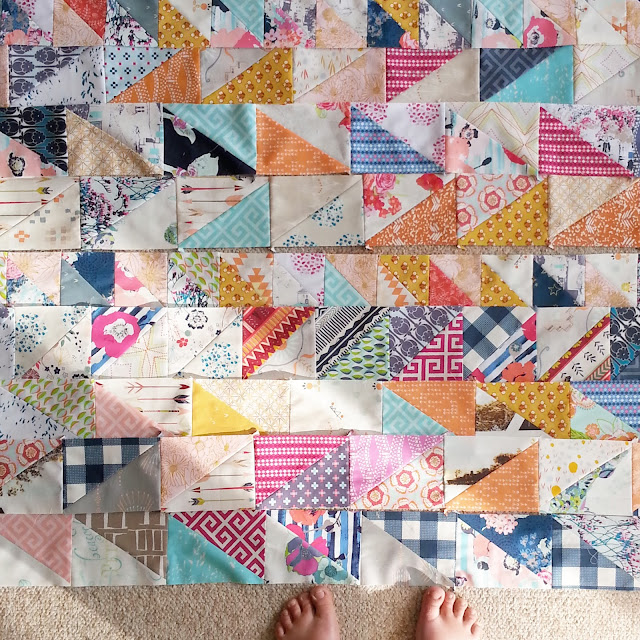The design came to America in the 1860s, probably via British and Amish settlers, a decade of turmoil and war in US history. In 1865, when Abraham Lincoln was assassinated, Andrew Johnson came into office. Both men had been born in log cabins and this become a powerful symbol through the second half of the 1800s, used often to remind voters of their humble origins. They were 'men of the people'.
The log cabin symbol came to encompass American history, ideals, and identity. It was linked to a president that ended the civil war, it expressed trustworthiness and humility, and also that anyone, no matter their beginnings, can become anything they choose. If you want a quilt that represents the great American dream, this is your quilt.
The first time we see this quilt design named 'Log Cabin' is in 1869. By the 1870s, the design became so popular that it was often given its own category in country fairs. They were often made of wool blends, and then later from cotton and silk. Interestingly, they were almost always foundation pieced onto a square of muslin. They weren't often quilted, but tied in the centre squares.
I'm guessing the reason for this explosion of log cabin quilts was not only political or nostalgic, but also due to the seemingly endless variations in design that can be achieved through this simple block. Today I chose a variation called "White House Steps", a name a whole lot less humble than log cabin, but I think the symmetry will work well with the rest of my sampler quilt.

LOG CABIN 12" BLOCK TUTORIAL
You will need:
Red: Two 3.5" x 2" rectangles, two 6.5" x 2" rectangles, two 9.5" x 2" rectangles, two 12.5" x 2" rectangles.
White: One 3.5" square, two 6.5" x 2" rectangles, two 9.5" x 2" rectangles.
1. Sew the two red 3.5" strips to opposite sides of the white square. Press toward the red.
2. Sew the 6.5" strips to the other sides. Press.
3. Next, sew the 6.5" white strips to the sides which have the shorter 3.5" strips. Press. Sew the 9.5" strips to the other sides.
4. Finally, sew the 9.5" red strips to the sides where the 6.5" strips were sewn. Press and sew the remaining 12.5" strips to the last edges of the block. Press.
And done!
With so much history and symbolism encompassed in one humble design, I can see why they became a category of quilts all on their own, can't you? I'm adding this to my 'want to make' list!





















































